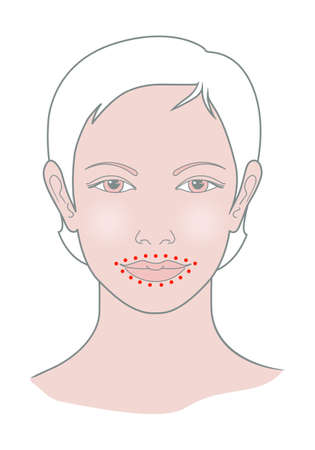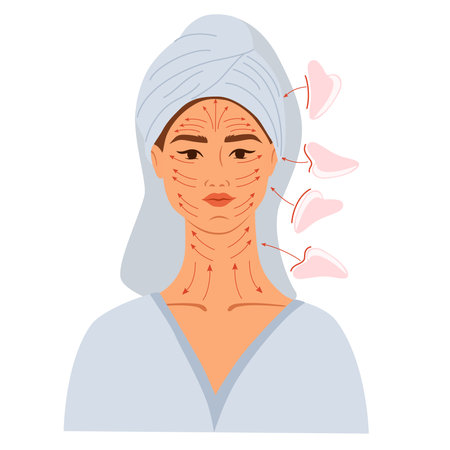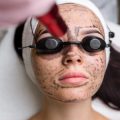Introduction to Hyperpigmentation in Skin of Colour
Hyperpigmentation is a common skin concern that refers to areas of the skin becoming darker than the surrounding tissue. This condition can affect anyone, but it is particularly prevalent and often more noticeable in individuals with skin of colour. People with higher levels of melanin—such as those from Black, Asian, Middle Eastern, or mixed ethnic backgrounds—may experience hyperpigmentation differently compared to those with lighter skin tones. In the UK, where multicultural communities are an integral part of society, understanding the unique ways hyperpigmentation presents and impacts individuals with skin of colour is especially important. By recognising these differences and exploring how cultural context shapes both perception and treatment options, we can foster a more inclusive approach to skincare and wellbeing across the UK’s diverse population.
Common Causes of Hyperpigmentation in the UK
Hyperpigmentation is a common concern among individuals with skin of colour living in the UK, and understanding its root causes is crucial for effective management. The British environment presents unique challenges and influences that can exacerbate or trigger pigmentation issues. Below, we explore some of the most prevalent causes within the UK context.
Sun Exposure: The Unseen Culprit
Contrary to popular belief, even the typically overcast British weather does not eliminate the risk of sun-induced hyperpigmentation. Ultraviolet (UV) radiation penetrates clouds and can stimulate melanin production, especially in darker skin tones that are naturally more reactive to UV exposure. Many residents underestimate the importance of daily sun protection due to the milder climate, inadvertently increasing their risk.
Post-Inflammatory Hyperpigmentation (PIH)
PIH occurs when the skin darkens following inflammation or injury, such as acne, eczema, or minor cuts—conditions common in urban environments like London or Manchester. In people with skin of colour, PIH can be more pronounced and persistent. Access to prompt dermatological care may also vary across communities, sometimes delaying effective treatment and exacerbating pigmentation.
Hormonal Factors
Changes in hormone levels—during pregnancy (melasma), with oral contraceptives, or certain medical conditions—can trigger hyperpigmentation. These hormonal fluctuations are not limited by geography but may be compounded in the UK by lifestyle factors and stressors unique to multicultural urban living.
The UK’s Unique Climate and Healthcare Environment
The interplay between frequent rain, lower annual sunlight hours, and colder temperatures can affect both skin health and routines. For example, less sun might lead to inconsistent sunscreen use, while central heating during long winters can dry out skin, making it more susceptible to irritation and subsequent pigmentation changes.
Summary Table: Key Causes of Hyperpigmentation in the UK
| Cause | Description | UK-Specific Considerations |
|---|---|---|
| Sun Exposure | UV rays increase melanin production | Mild climate leads to underestimation of risk; inconsistent sunscreen use |
| PIH | Darkening after inflammation/injury | Diverse population; variable access to dermatology care |
| Hormonal Factors | Pigmentation triggered by hormones | Lifestyle stressors; multicultural health needs |
| Climate & Environment | Weather and heating affect skin barrier function | Frequent rain/cold; prolonged indoor heating periods |
Navigating Hyperpigmentation Triggers with Confidence
Acknowledging these common causes empowers individuals with skin of colour in the UK to take proactive steps towards prevention and care. By understanding both universal triggers and those specific to the British context, you can approach your skincare journey with greater confidence and self-compassion.

3. Psychosocial Impact on Individuals and Communities
Hyperpigmentation can have a profound psychosocial impact, especially within the UK’s richly diverse and multicultural society. For many individuals with skin of colour, visible pigmentation concerns are not just a cosmetic issue but also a source of emotional distress that can influence day-to-day life. The presence of dark spots or uneven skin tone often affects self-esteem, making people feel self-conscious or less confident in social and professional settings.
Within communities, these challenges are sometimes heightened by societal standards of beauty and media representation that historically favour lighter, even-toned skin. This underrepresentation or misrepresentation can leave individuals feeling isolated, misunderstood, or pressured to conform to unrealistic ideals. In the UK, where people from African, Caribbean, South Asian, and other ethnic backgrounds form significant parts of the population, such experiences are all too common.
It is crucial to recognise how these psychosocial effects ripple outwards from the individual to their wider community. Concerns around hyperpigmentation can influence choices about clothing, makeup, and even participation in social activities. Some may avoid public events or photographs due to feelings of embarrassment or fear of judgement.
Supportive conversations—whether among friends, family members, or community groups—can help break down stigma and encourage acceptance. When people share their experiences openly, it fosters greater understanding and resilience. Moreover, seeing positive representation in British media and advertising can empower individuals to embrace their natural skin tone with pride.
Addressing hyperpigmentation is not only about managing physical symptoms but also about nurturing emotional well-being and building confidence. By fostering awareness and celebrating diversity within the UK’s cultural context, we can ensure everyone feels seen, valued, and supported in their journey towards self-acceptance.
4. Cultural Perceptions and Beauty Standards in the UK
The United Kingdom is renowned for its cultural diversity, with a vibrant mix of ethnicities and traditions shaping its social landscape. When it comes to skin, especially among people of colour, British cultural attitudes and prevailing beauty ideals play a significant role in how hyperpigmentation is perceived and managed.
Changing Attitudes towards Skin Tone
Historically, Western beauty standards have often prioritised lighter skin tones, sometimes leading to stigma around visible pigmentation. However, the UKs increasingly multicultural society is gradually fostering broader acceptance of diverse skin tones. Still, remnants of older beauty ideals can influence personal self-esteem and public perception.
The Influence of Media and Representation
British media has a profound impact on societal beauty norms. The representation—or lack thereof—of people with hyperpigmentation in advertising, film, and fashion can affect how individuals view themselves. While there has been progress towards inclusivity, disparities remain, which can perpetuate misconceptions or unrealistic expectations about “flawless” skin.
Community Perspectives: A Comparative Look
| Community | Perception of Hyperpigmentation | Preferred Management Approach |
|---|---|---|
| South Asian | Often seen as undesirable; linked to traditional ideas of beauty | Use of home remedies and skin-lightening products; increasing openness to medical advice |
| Black British | Concerns about visibility and evenness; some pride in natural skin variations | Interest in gentle skincare routines; growing advocacy for self-acceptance |
| White British | Less common but still associated with ageing or sun damage | Use of cosmetic cover-ups and clinical treatments |
Navigating Beauty Pressures with Confidence
The pressure to conform to certain beauty standards can be overwhelming, especially when dealing with visible skin differences like hyperpigmentation. It’s important to remember that confidence stems from embracing one’s unique features. British culture is evolving, with more voices encouraging self-acceptance and celebrating the rich spectrum of skin tones found across the country.
If you ever feel uncertain due to external pressures or internal doubts, consider seeking out supportive communities, both online and offline, that uplift diversity and encourage honest conversations about beauty. By understanding these cultural nuances, individuals can make empowered choices about their skincare while nurturing genuine self-confidence.
5. Approaches to Management and Professional Guidance
Managing hyperpigmentation in skin of colour within the UK requires a nuanced approach that combines medical expertise, cultural sensitivity, and evidence-based skincare. Prevention is always preferable, so it’s vital to use broad-spectrum sun protection daily—even on cloudy British days—as UV exposure remains a key trigger for hyperpigmentation. Gentle skincare routines are recommended, avoiding harsh exfoliants and irritants that can exacerbate pigmentation issues, especially in melanin-rich skin.
Best Practices for Prevention and Treatment
For those experiencing hyperpigmentation, the first step should be consulting a healthcare professional. The NHS provides valuable resources and may refer patients to dermatology specialists familiar with treating diverse skin tones. Topical treatments containing ingredients like azelaic acid, niacinamide, and vitamin C are often effective, but it’s essential to seek guidance to avoid products that might cause irritation or worsen pigmentation.
NHS Resources and Support
The NHS offers information on common skin conditions and can help identify appropriate treatment pathways. Many GPs are now better informed about the specific needs of patients with skin of colour, but if you feel your concerns aren’t being fully understood, don’t hesitate to request a referral to a dermatologist with relevant experience.
Skincare Trends in the UK
There’s been a rise in UK-based skincare brands formulating products for diverse skin tones. Look for brands that specifically address the needs of melanin-rich skin and prioritise transparency in their ingredients. While over-the-counter options abound, always verify product claims and consult with professionals before starting new treatments.
The Importance of Culturally Sensitive Care
Culturally sensitive care is essential—not just for effective treatment but also for building trust between patients and practitioners. Healthcare professionals should recognise the unique presentation of hyperpigmentation in different skin types and respect individual preferences regarding appearance and self-care. Open communication ensures that your concerns are heard and addressed appropriately, empowering you to make informed decisions about your skin health.
6. Empowering Individuals: Education and Community Support
Empowering people of colour in the UK to manage hyperpigmentation with confidence begins with robust education and genuine community support. Many grassroots initiatives and national organisations have recognised the unique needs of Black, Asian, and other ethnic minority groups, providing tailored resources and workshops focused on skin health. These efforts not only demystify common misconceptions about hyperpigmentation but also foster a sense of belonging by addressing the specific experiences and concerns faced by diverse communities.
Educational Campaigns for Awareness
Across the UK, various educational campaigns have emerged to raise awareness about hyperpigmentation in skin of colour. These campaigns often collaborate with healthcare professionals, local influencers, and cultural leaders to ensure that information is accessible, accurate, and culturally sensitive. By promoting facts about causes, prevention, and available treatments, these initiatives encourage individuals to seek out reputable advice rather than rely on myths or potentially harmful home remedies.
Support Systems within the Community
Support systems play a vital role in helping individuals feel seen and supported throughout their skincare journeys. Community-based organisations often host support groups—both online and in person—where people can share experiences, discuss effective products, and connect with trusted dermatologists who understand the nuances of treating skin of colour. Such networks reduce isolation and build collective confidence in navigating skin health challenges.
Promoting Inclusivity within Healthcare
The conversation around inclusivity has also reached mainstream healthcare providers, many of whom are now receiving specialised training on how to better serve patients with diverse skin tones. This shift ensures that consultations are respectful, relevant, and empowering for all patients. By advocating for representation in medical research and product development, community voices continue to drive change towards a more inclusive approach within the UK’s skincare industry.
Through ongoing education, accessible resources, and strong community bonds, individuals from all backgrounds can feel empowered to take charge of their skin health. Together, these initiatives pave the way for a future where everyone feels confident in their skin—celebrating both their individuality and shared experiences within the vibrant tapestry of UK society.


